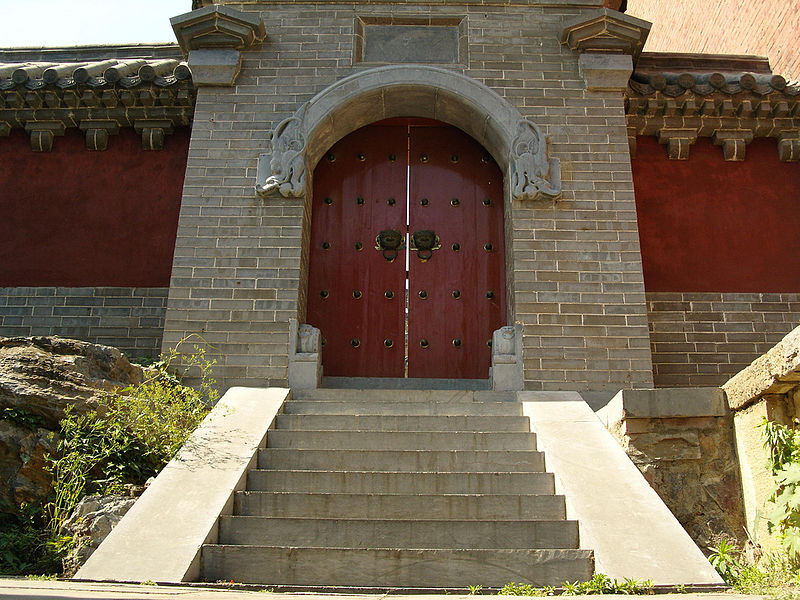





 |
 |
 |
 |
 |
 |
|---|---|---|---|---|---|
 |
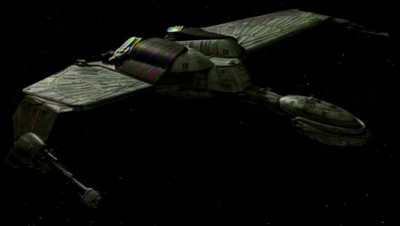 |
 |
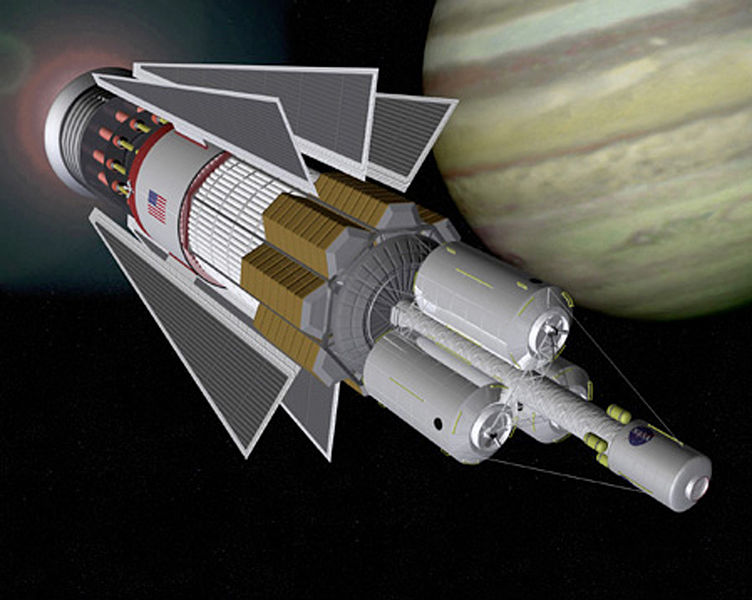 |
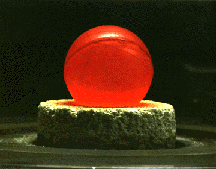 |
|---|---|---|---|---|
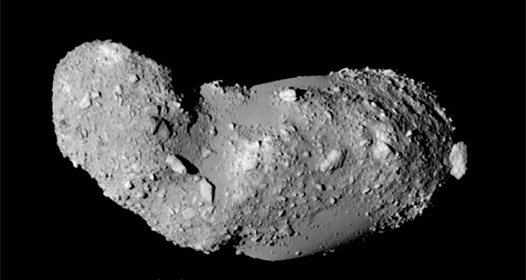 |
 |
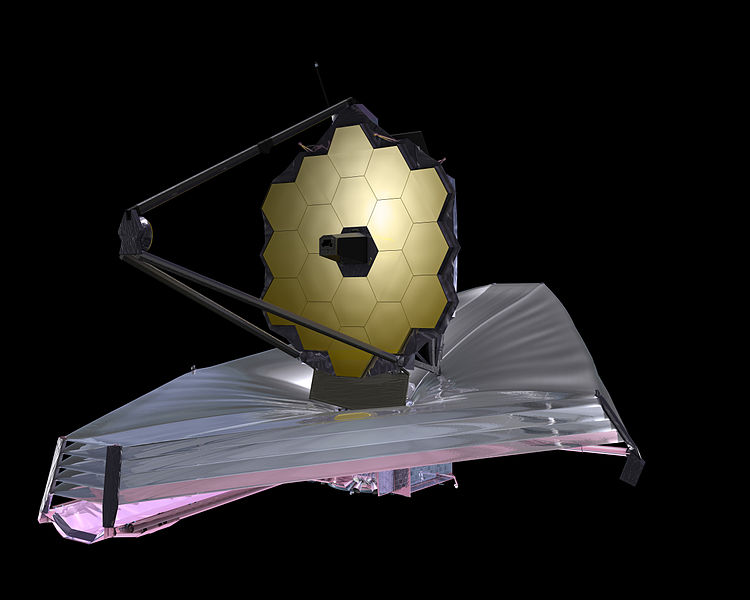 |
|---|---|---|
 |
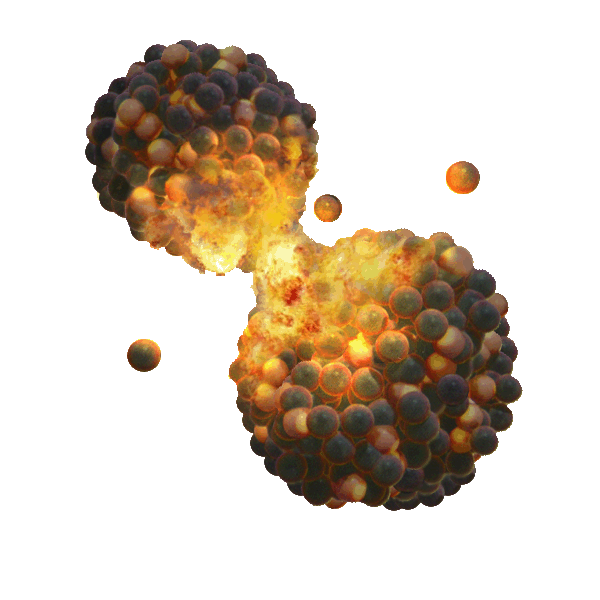 |
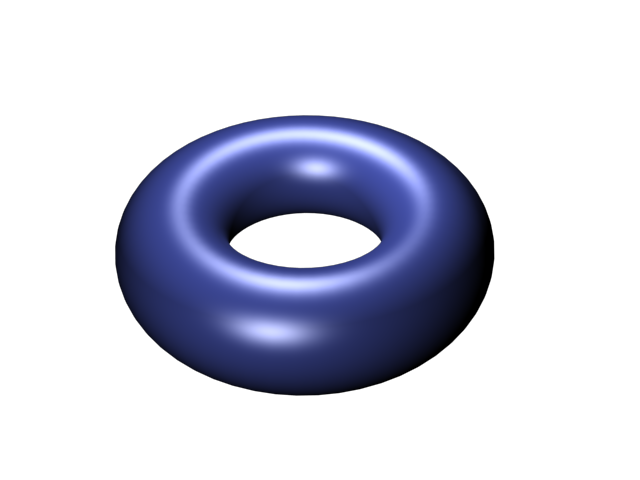 |
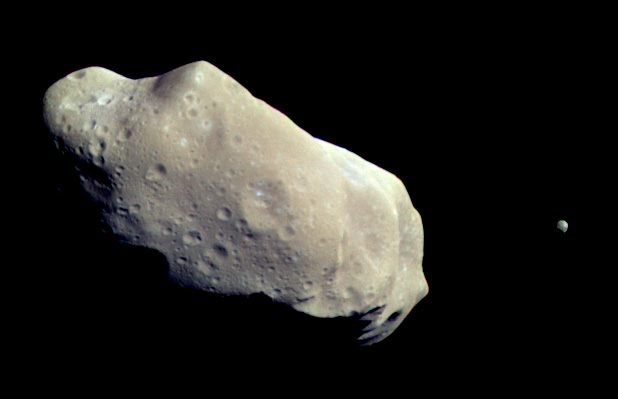 |
 |
|---|---|---|---|---|
 |
 |
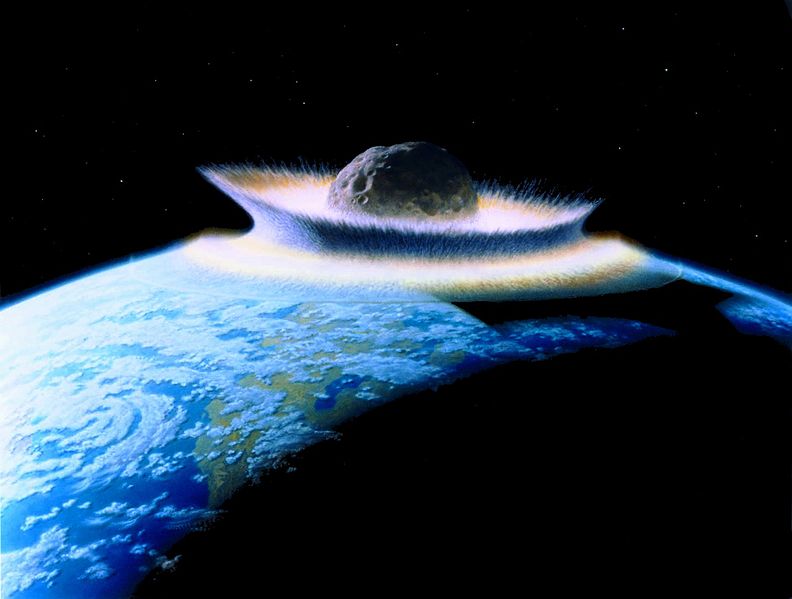 |
 |
 |
|---|---|---|---|---|
 |
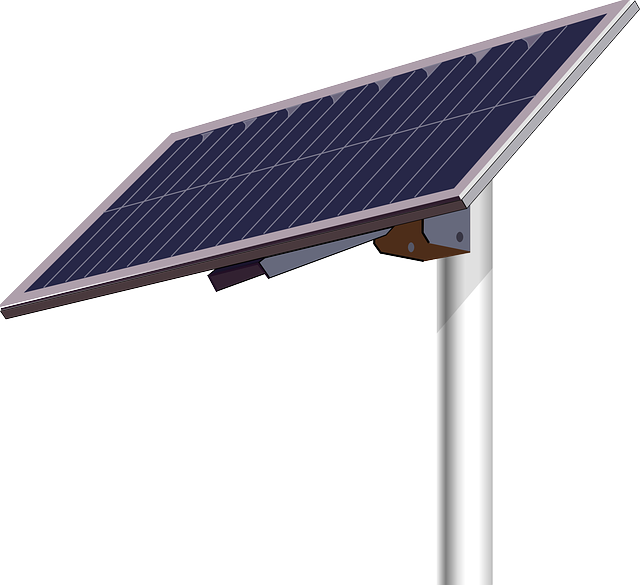 |
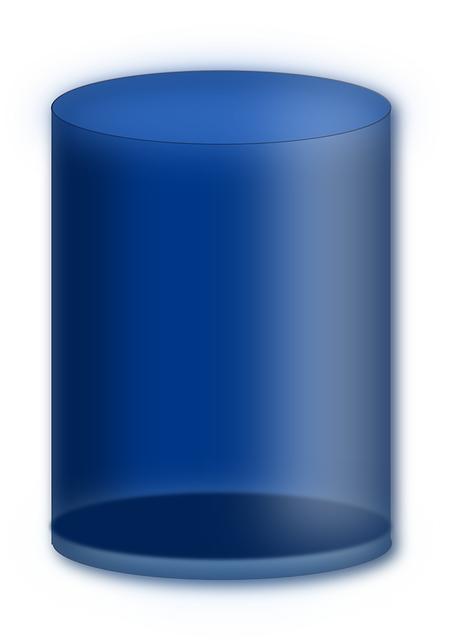 |
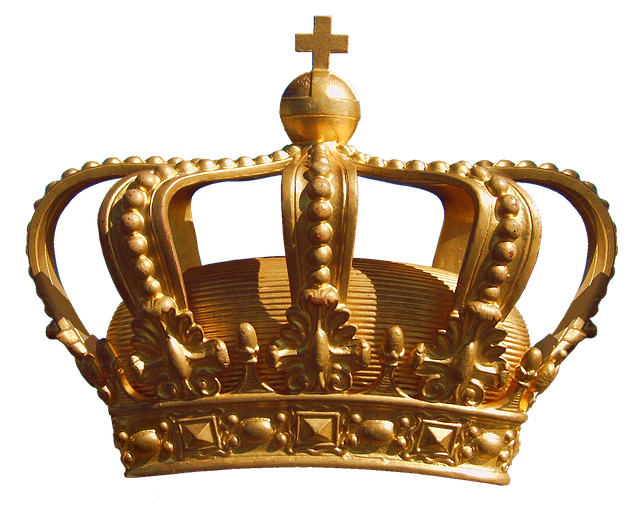 |
|---|---|---|---|
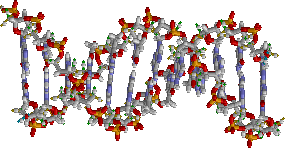 |
 |
 |
 |
 |
 |
 |
|---|---|---|---|---|---|---|
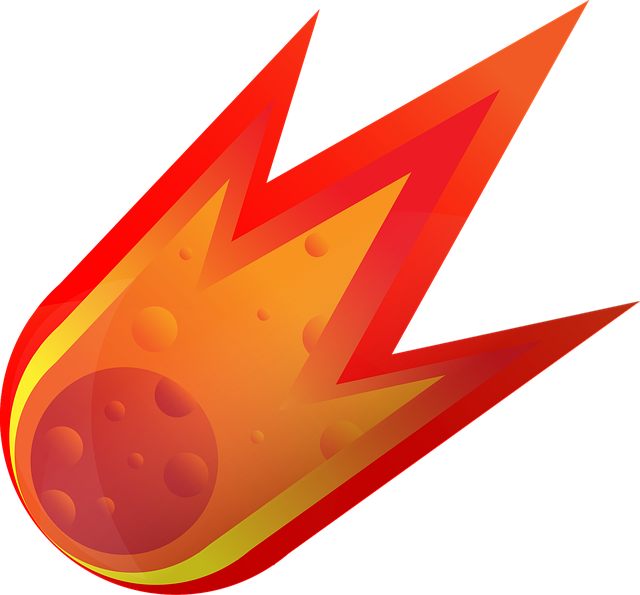 |
 |
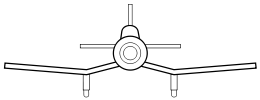 |
 |
 |
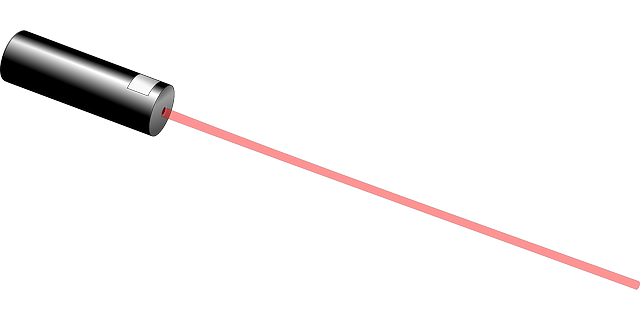 |
|---|---|---|---|---|---|
 |
 |
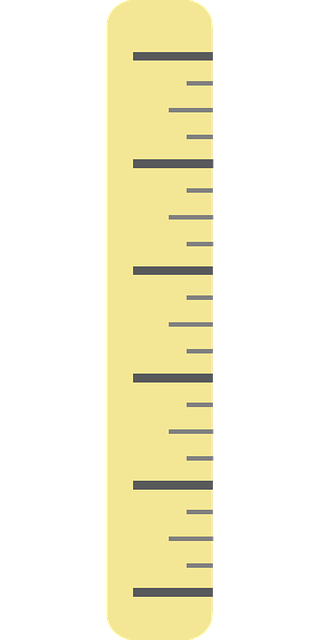 |
 |
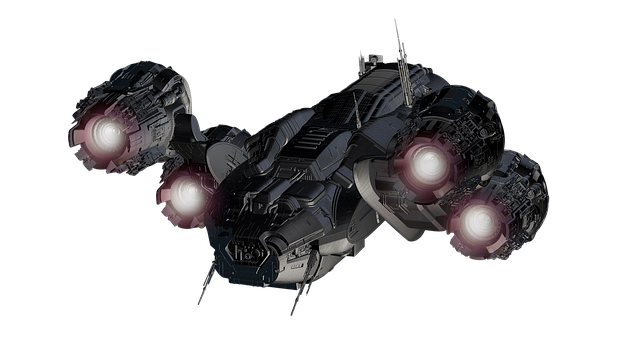 |
|---|---|---|---|---|
 |
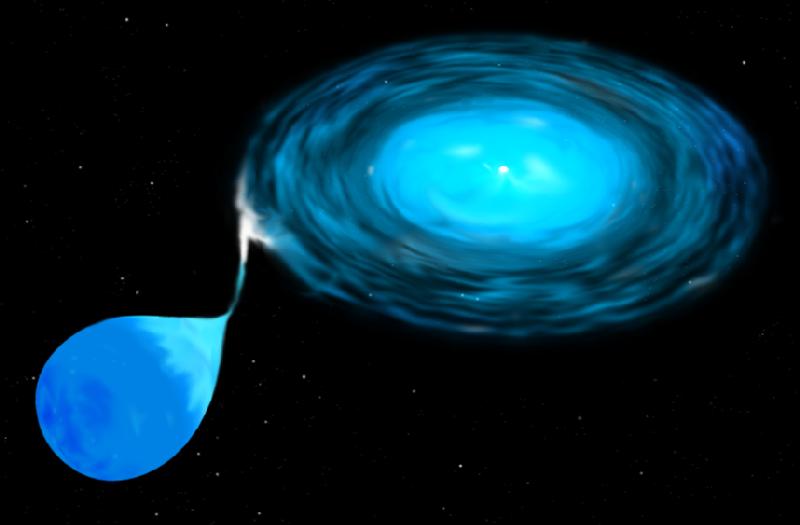 |
|---|---|
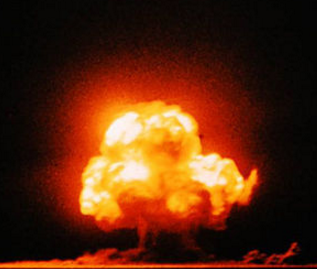 |
|---|
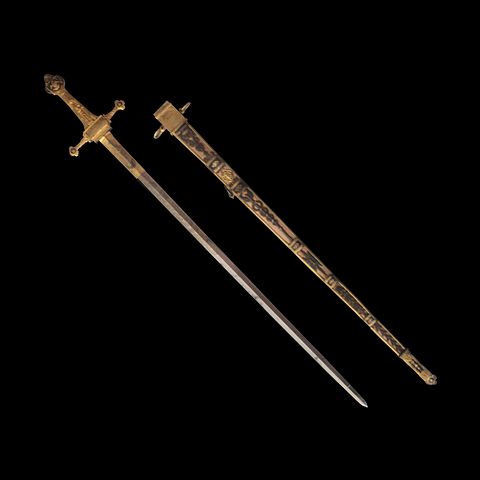 |
 |
 |
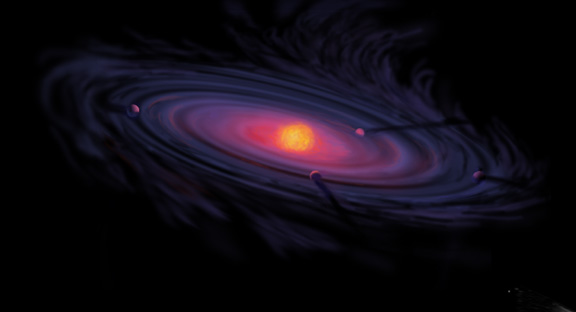 |
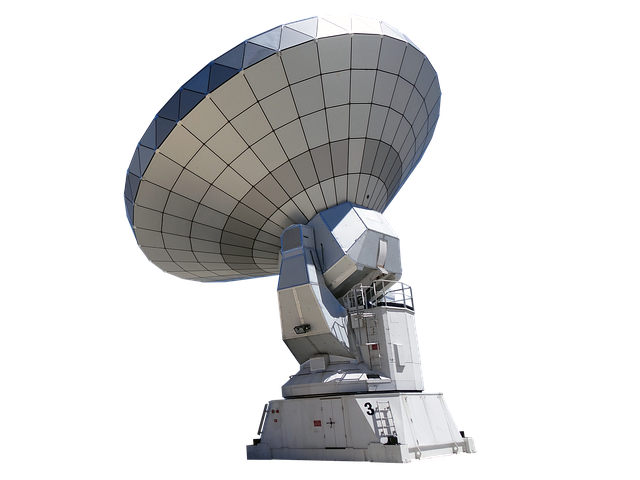 |
|---|---|---|---|---|
 |
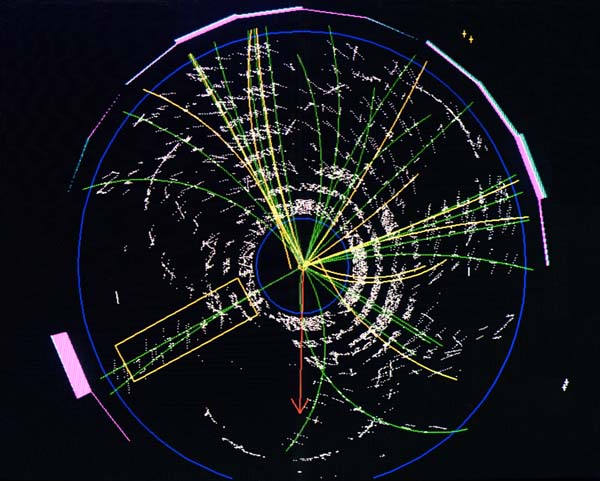 |
 |
 |
 |
|---|---|---|---|---|
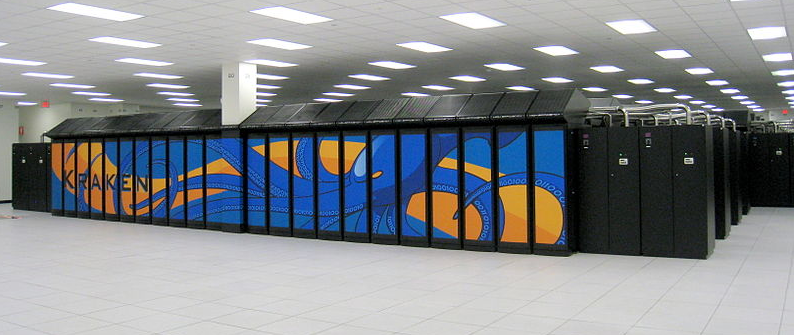 |
 |
|---|---|
To compare computers and brains, we need to define an "operation". For a computer, we use "floating point operation" and for a brain, we use a synapse action.
With these definitions, the world's fastest supercomputer is 10 times faster than a brain for operations per second, and a gamestation is 2500 times slower.
A brain is 3 orders of magnitude better than a computer for speed per power.
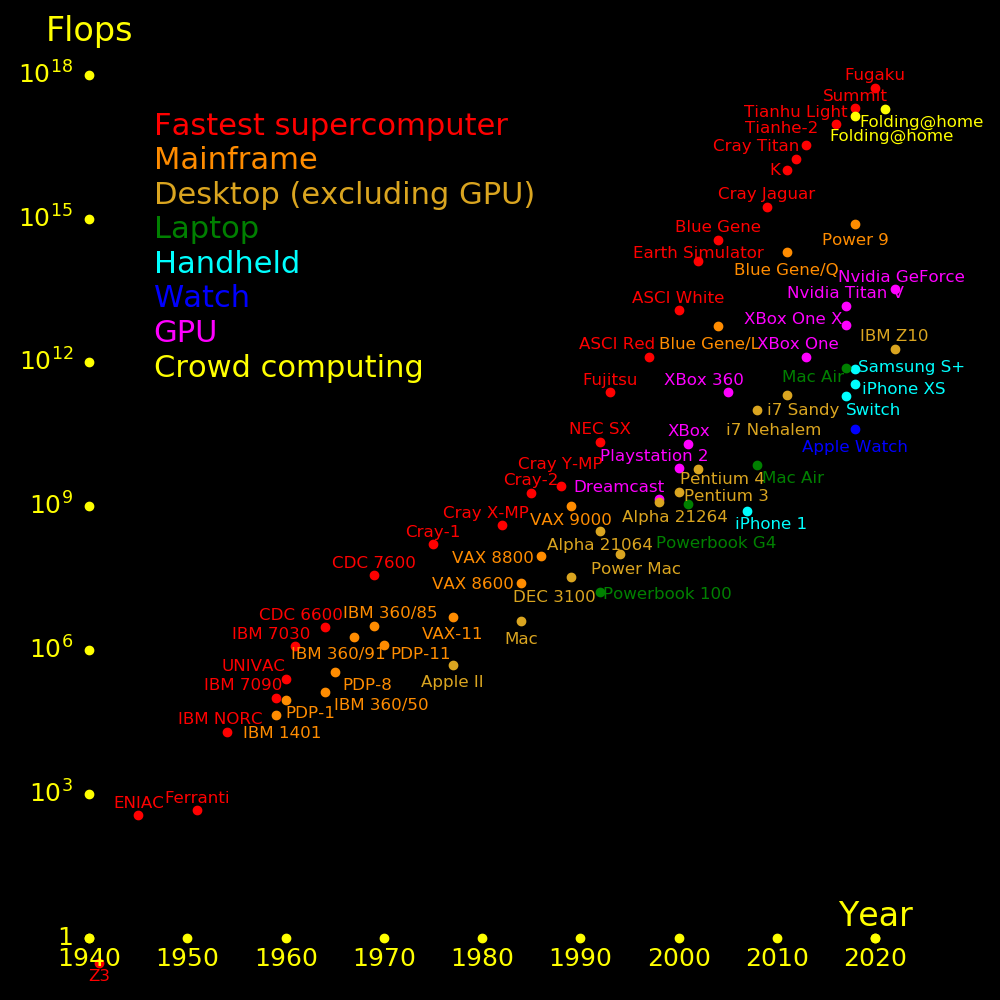 |
|---|
For a computer, "elements" is the number of floating point units, and for a brain, it's the number of synapses. A floating point operation (Flop) is an add or a multiply.
A brain's clock time is the time of a chemical synapse (2 milliseconds) plus the signal crossing time across the brain (2 milliseconds), for a total of 4 milliseconds, or 250 Hertz.
Speed Clock Elements Power Speed/Power Fuel/Year Memory Fuel
Ops/sec Hertz Watts Ops/Joule $/year Byte
Brain 2⋅1016 250 1014 20 1014 3000 1014 Food
Supercomputer 2⋅1017 4⋅109 25000000 700000 3⋅1011 600000 1016 Electricity
Gamestation 8⋅1012 4⋅109 1000 1000 3⋅1011 1000 1011 Electricity
Supercomputing is driven by Flops/$ and mobile computing is driven by Flops/Watt. For 2023,
Speed per dollar, CPU = 2 GFlop/$ Speed per dollar, GPU = 40 GFlop/$ Memory, RAM = .4 GByte/$ Memory, solid state = 7 GByte/$ Memory, disk = 33 GByte/$ Speed per power, GPU = 300 GFlop/Watt Battery energy per mass = .6 MJoule/kg Battery power per mass = 500 Watt/kg
Battery energy/mass and power/mass advance slowly. Computer speed/$ and speed/power advance rapidly.
Clock speed topped out. The way forward is parallelization and vectorization.
 |
|---|
Computation speed is measured in Flops (Floating point operations per second). A floating point operation (Flop) is an add or a multiply.
A "core" is an independent floating point unit. Different cores can do different operations.
A core produces an add and a multiply every clock cycle, hence it produces 2 floating point operations per cycle.
A core can be "vectorized" (a GPU), which means that it does many adds and multiples simultaneously. For vectorization, each element in the vector has to do the same operation. Gaming hardware is heavily vectorized. Computers became parallelized in the 1990s and vectorized in the 2010s.
The speed of a computer is
Computer speed = S = 2FCV Clock frequency = F Cores = C Independent CPUs Vectorization = V Number of GPU vectors per core
A sperm whale brain is 5 times larger than a human brain. It has 10 tons of audio organs and sings louder than a jet engine.
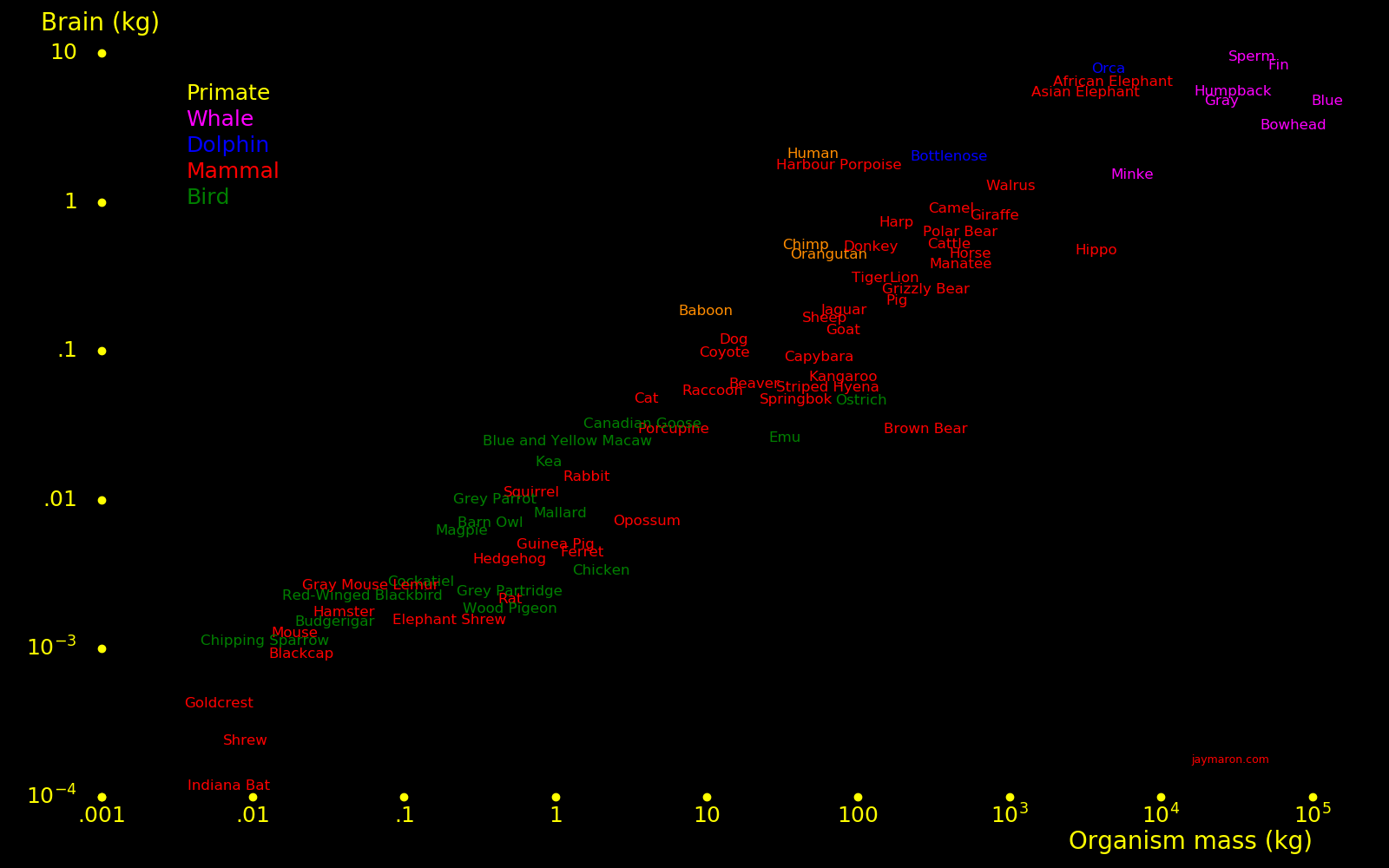 |
|---|
The table gives the year that a computer eclipsed the world champion.
Year World Champion Year the game was invented
Checkers 1990 Alexei Chizhov 1243
Scrabble 2000 1938 At the time, there was no consensus world #1 player
Chess 2006 Vladimir Kramnik 650
Go 2016 Lee Sedol -400
Shogi 2017 Yoshiharu Habu 1058 Japanese chess
The chess player Edward Lasker said:
"While the Baroque rules of Chess could only have been created by humans, the rules of Go are so elegant, organic, and rigorously logical that if intelligent life forms exist elsewhere in the universe, they almost certainly play Go."
The rules of chess are an example of "fine tuning" and there are lots of free parameters (the moves allowed by each piece).
 |
|---|
Most stars in the galaxy were formed before the sun. If alien exist, they likely have a head start on us by billions of years.
The sun is 23000 light years from the galactic center. A fusion drive can move at 1/10 the speed of light and can cross the galaxy in 100,000 years. If aliens want to be here, they would be.
Intelligent life likely requires an oxygen atmosphere because aerobic respiration yields vastly more energy than anaerobic respiration. Glucose gives 30 ATP of energy aerobically and 2 ATP anaerobically. A human brain uses 20 Watts and would be hard to power anaerobically.
There are likely few planets that achieve an oxygen atmosphere. You need abundant water, biomass, and photosynthesis. You also need to not overdo it with water and be a waterworld. You need both continents and oceans.
In the Age of Dinosaurs, there was much more biomass than today, and the atmospheric oxygen fraction peaked at 38%. This enabled 80-kg organisms to fly.
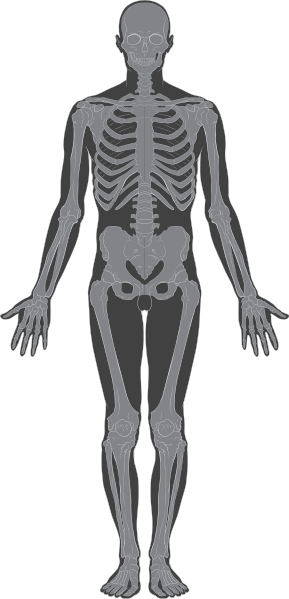 |
 |
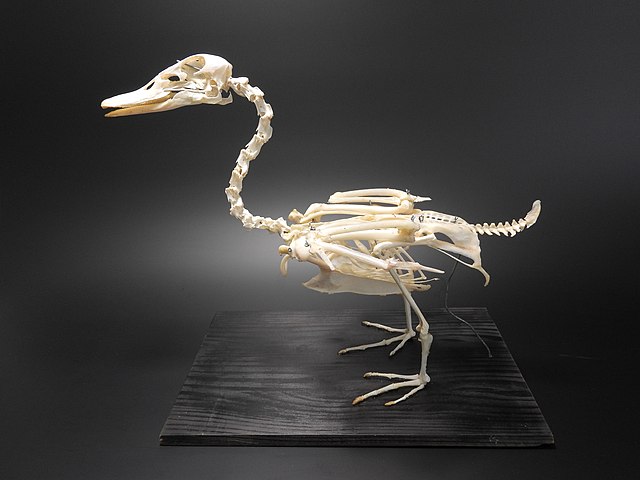 |
 |
|---|---|---|---|
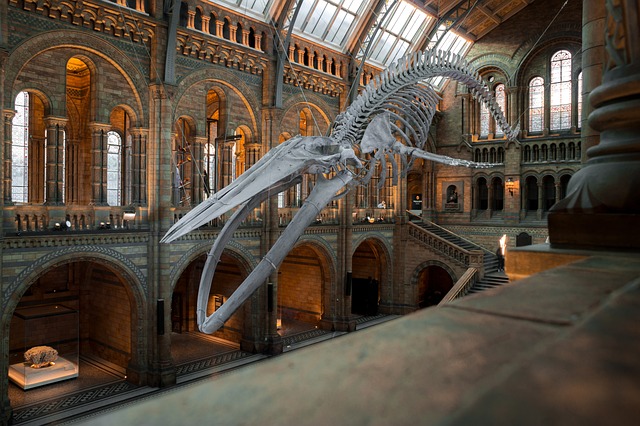 |
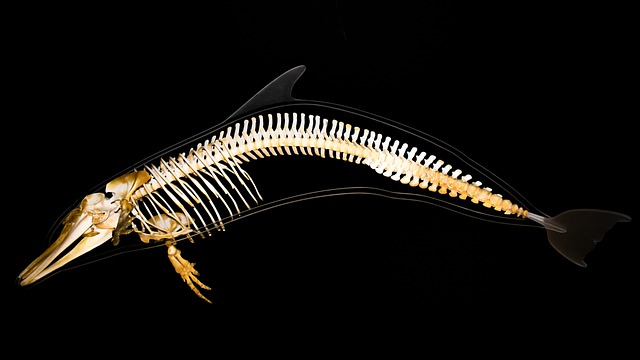 |
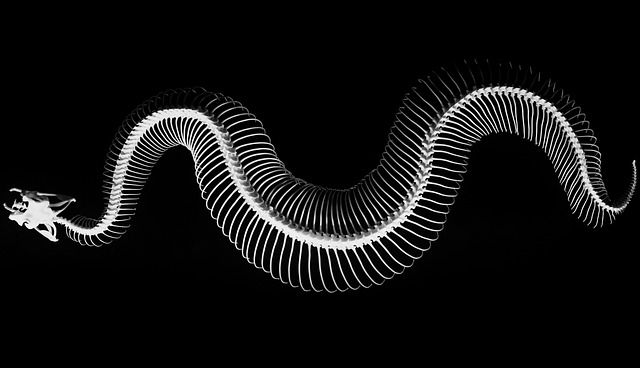 |
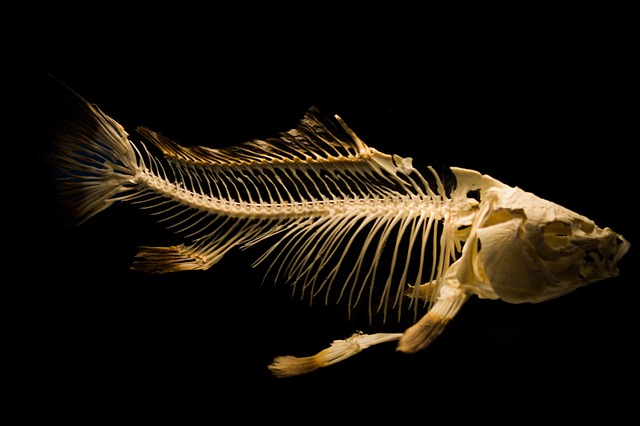 |
|---|---|---|---|
Elements of the tetrapod design include:
A spine
A skull
A ribcage
Four limbs
One bone in the upper limbs, enabling shoulders and hips to be universal joints.
Two bones in the lower limbs, meaning that elbows and knees are linear joints.
The reason for 2 bones in the lower limbs is to control torque in hands and feet.
The diaphragm works with the ribcage and gut to generate suction to take in air.
Humans have the most complex wrists and hands in the animal kingdom. Only humans can throw rocks accurately.
Tetrapods include mammals, birds, lizards, and amphibians. Fish aren't tetrapods. Whales and dolphins are tetrapods. Snakes once had limbs and many snakes lost them.
The tetrapod design emerged 370 million years ago and the first land animals emerged 350 million years ago.
Bruce Lee: There is only one type of body. 2 arms, 2 legs, etc. that make up the
human body. Therefore, there can only be one style of fighting. If the other
guy had 4 arms and 2 legs, there might have to be a different one.
 |
|---|
The 12-tone system is fortuitous. For a 12-tone octave, ratio tuning and logarithmic tuning give nearly the same frequencies. Aliens will use the 12-tone scale.
The 7 harmonic scales and the 7 melodic scales are decided naturally, by mathematics. Aliens will use these scales.
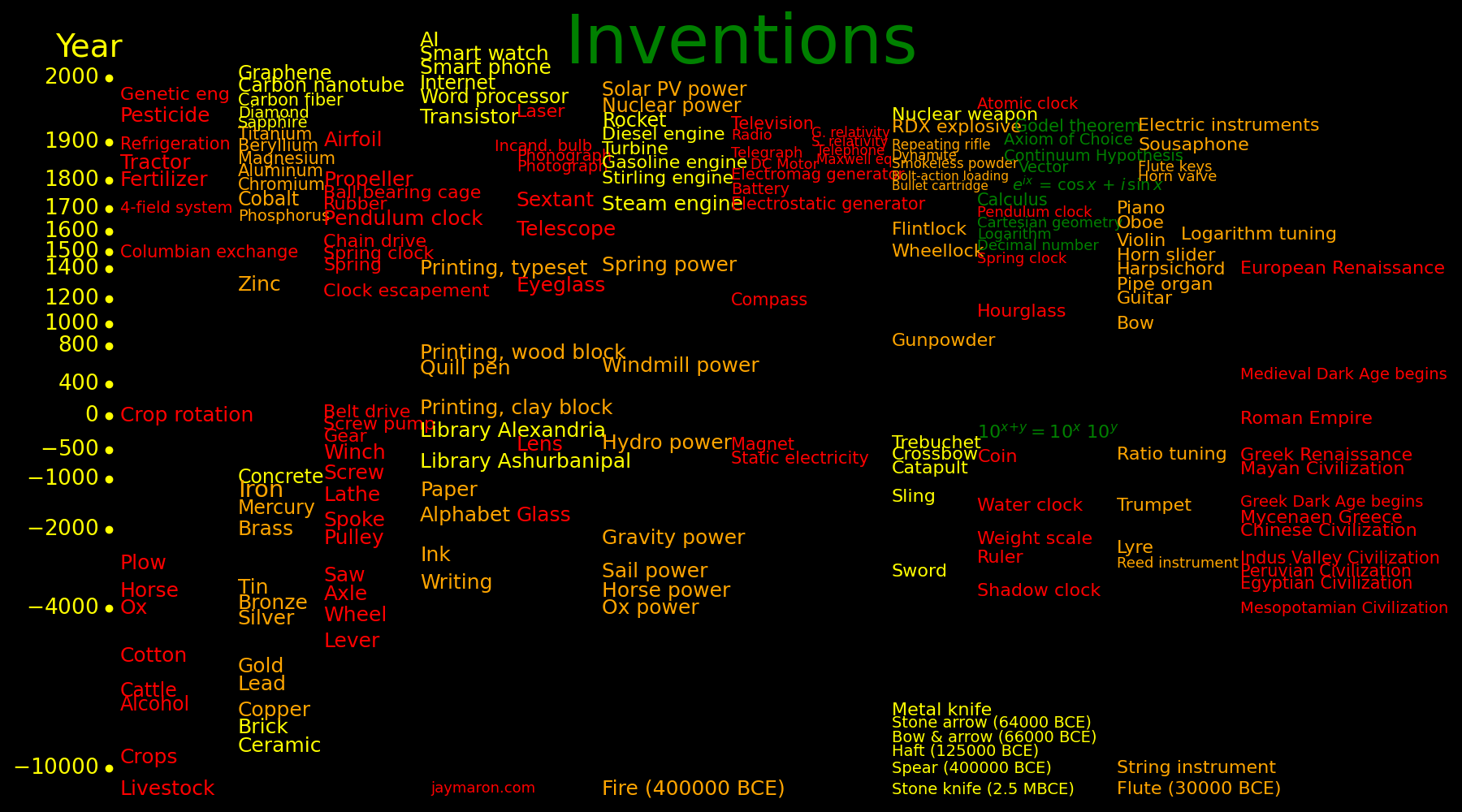 |
|---|
One can speculate as to if aliens helped human technology. If aliens were maximum helpful, the strategic inventions to give are:
Writing with a phonetic alphabet. Paper, quill pen, and ink.
Farming: Crops, livestock, work animals, and fertilizer.
Iron smelting. Point out that exotic minerals yield exotic metals if smelted.
Sail and windmill
Heat engine such as a steam engine or gasoline engine.
Electrochemical cell. This begets electromagnetism and modern chemistry. It
enables the isolation of most elements.
Mechanical engineering, such as wheels, axles, springs, gears, chain drive, and caged ball
bearings.
Mathematics. Decimal numbers, exponential, logarithm, Cartesian geometry, calculus.
 |
|---|
Flight became possible when engines reached a critical power/mass of 100 Watts/kg.
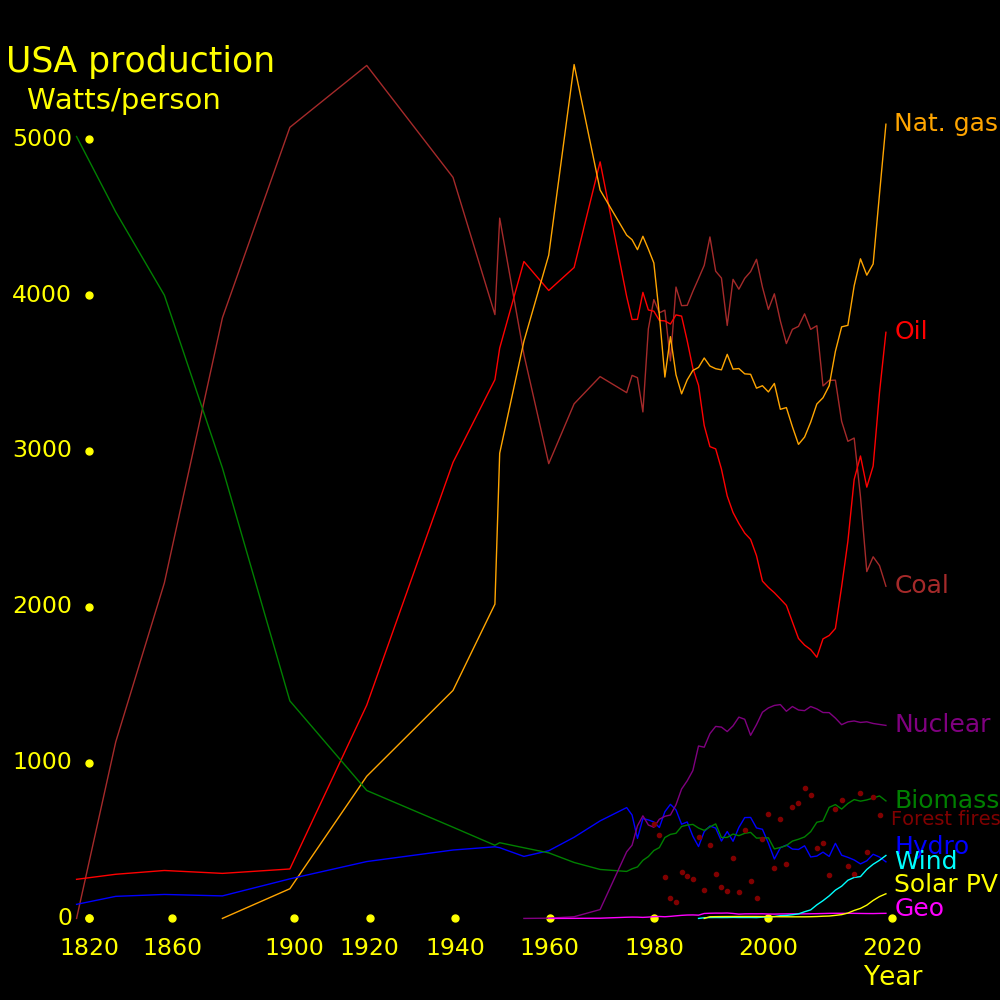 |
|---|
The Kardashev scale ranks civilizations by power. A civization can alternatively be ranked by its means for generating power.
Civilization Level Year Max power Max energy
Watts Joule
Human power 1 Ancient Human = 100 Watts of sustained power
Fire 2 -400000
Elastic power (bow & arrow) 3 -60000
Domestic animal power 4 -4000 One horsepower = 746 Watts
Sail 5 -3000 A large ship from Ancient Greece is 10000 Watts of wind power
Hydro power 6 -400
Windmill 7 850
Explosion power. Gunpowder 8 850
Whale oil 9 875
Spring 10 1420
Heat engine 11 1714 Convert heat to mechanical power
Battery 12 1800
Electrical generator 13 1831 Convert mechanical energy to electric energy
Nuclear fission 14 1945 e25 Energy in uranium & thorium reserves
Photoelectric 15 1976
Fusion 16 Future
Kinetic energy, asteroid belt 17 Future e30
Kinetic energy, moons 18 Future e32
Photoelectric cells around sun 19 Future 4e26 Solar luminosity. e34 Joules in 1 year
Photoelectric cells, big star 20 Future 2e33 eta Carinae luminosity
Galactic central stars 21 Future e36 The Milky Way center has thousands of blue giant stars, each with more than 1 million solar luminositie
Milky Way central black hole 22 Future 4e37 Eddington limit for accretion
Milky Way, all stars 23 Future e38
Massive galaxy, all stars 24 Future e40 Virgo central galaxy
Supermassive black hole 25 Future e41 Largest quasars
Energy Practical Perfect Energy/Mass
source exhaust exhaust
speed speed
km/s km/s MJoule/kg
Antimatter 100000 90000000000
Fusion Deuterium+Li6 6900 23000 270000000
Fission Uranium-235 4000 12000 74000000
Fission Plutonium-239 4000 12000 76000000
Radioactive Plutonium-238 50 2100 2300000
Chemical Hydrogen+O2 4.4 5.1 13.2
Chemical Methane +O2 3.7 4.7 11.1
Chemical Kerosene+O2 3.3 4.5 10.3
Chemical Al+NH4NO3 2.7 3.7 6.9
Each technology has a current state-of-the-art and a future maximum. Sometimes the future maximum can be calculated and sometimes not. Technological limits that have the potential to improve include:
Current Future Unit Current state Future state
limit limit of the art of the art
Superconducting max temperature 134 ? Kelvin HgBa2Ca2Cu3O8
Transistor size 80 ? nm
Breakdown electric field 2000 ? MV/meter Diamond or BaTi3
Permittivity (relative) 250000 ? Dimensionless CaCuTiO3
Permeability (relative) 1000000 ? Dimensionless Metglass 2714A amorphous alloy
Shear strength/density 860 3000 MJoule/kg Carbon fiber Diamond nanobeams that are isotopically-pure
Electric conductivity 100 S/m Graphene
Thermal conductivity 3300 W/(m K) Diamond, pure isotope
Temperature low 38e-12 ? Kelvin Laser cooling
Infrared detector limit 28 ? microns Gallium arsenide
Particle energy 6.5 ? TeV Large Hadron Collider
Particle accelerator force 100 ? MeV/meter Dual-beam system
Time precision 10-16 ? Dimensionless Caesium clock
Length precision 10-21 ? Dimensionless LIGO
Generator, radioisotope, efficiency .1 ? Dimensionless
Turbine efficiecy .64 ?
Photocell efficiency .48 ?
Thermoelectric efficiency .2 SnSe
Technologies that are nearly maxed out are:
Current Future Unit Current limit Future limit
limit limit
Melt temperature 4232 4370 Kelvin HfTaC HfCN
Battery, energy/mass, Li-ion cobalt .8 1 MJoule/kg
Battery, energy/mass, Li-ion sulfur 1 1.8 MJoule/kg
Tensile strength 130 ? GPascal Graphene
Tensile strength/mass 130 ? MJoule/kg Graphene
Magnetic field, permanent magnet 1.25 ? Tesla Neodymium magnet
Magnetic field, continuous, supercon 32 ? Tesla
Magnetic field, continuous, resist 38 ? Tesla
Magnetic field, superconduct crit 55 ? Tesla MgB2
Chromium is stronger, harder, and less dense than iron, and has the properties of mithril and Valyrian steel.
Tungsten is stronger, harder, and denser than iron, and has the properties of adamantium, vibranium, and duranium.
Types of exotic matter:
Exist Found
Gold Yes Ancient Naturally-occuring. Smelting was discovered in 6000 BCE.
Silver Yes Ancient Naturally-occuring. Smelting was discovered in 4000 BCE.
Copper Yes -5000
Tin Yes -3200 Bronze = Copper + Tin. Bronze is stronger than copper
Iron Yes -1200 Iron is stronger than bronze
Cobalt Yes 1735 First metal discovered since ancient times
Chromium Yes 1797 Stronger, harder, and less dense than iron. Candidate for mithril and Valyrian steel
Tungsten Yes 1783 Stronger, harder, and denser than iron. Candidate for adamantium, vibranium, and duranium
Magnesium Yes 1808 First metal produced by electrolysis
Charged matter Yes -600 Static electricity
Magnet Yes -500
Light, Infrared Yes 1800
Light, UV Yes 1801
Light, X-ray Yes 1896 Discovered with high voltage
Light, Gamma Yes 1900 Discovered as gamma decay
Photon Yes 1905 Photoelectric effect
Electron Yes 1897
Proton Yes 1919
Neutron Yes 1932
Lepton: Muon Yes 1937
Lepton: Tau Yes 1975
Quark: Up Yes 1968
Quark: Down Yes 1968
Quark: Strange Yes 1968
Quark: Charm Yes 1968
Quark: Bottom Yes 1977
Quark: Top Yes 1995
Neutrino Yes 1956
Neutrino, sterile Likely No Interact only by gravity and not by the weak force
Neutrino, superheavy Possibly No
Neutrino, right-handed Possibly No
Gluon Yes 1978 Boson that carries the strong force and binds quarks
W boson Yes 1983 Carries the weak force
Z boson Yes 1983 Carries the weak force
Higgs boson Yes 2012
Graviton Yes No Boson that carries the gravitational force
Dark matter Yes No DoesnO’t feel the strong or electric force
Dark photon Possibly No Boson that carries a force that is felt by dark matter
Strong matter Yes No Bosons that mediate the strong force, such as X and Y bosons. Likely extremely massive
Feeble matter Likely No New weak bosons
Inflaton Yes No Cause of cosmic inflation. There may be multiple inflatons
Dark energy Yes No Matter with negative pressure
Antielectron Yes 1932
Antiproton Yes 1955
Antineutronn Yes 1956
Antimetal Yes No Requires an antistar
Antiuranium Yes No Requires an antisupernova
Magnetic monopole Likely No
Magnetic photon Possibly No Boson that exerts a force on magnetic monopoles
Mirror matter Possibly No Mirror versions of conventional particles
Primordial black hole Unknown No
Anyon Unlikely No Particles with spin other than 0, 1/2, 1, 3/2, 2.
Tachyon Unlikely No Particles that are faster than light
Biquark (meson) Yes 1947 2 quarks
Tetraquark Yes Yes 2 mesons bound together
Pentaquark Yes Yes 5 quarks. 4 quarks and an antiquark
Glueonium Yes 2020 Composite particle consisting of gluons
Quark-gluon plasma Yes 2000
Suburanics Yes 1911 Polonium, radium, actinium, protactinium. Proton number from 84 to 89.
Transuranics Yes 1942 Plutonium through Fermium. Proton number from from 94 to 100.
Neutronic matter Yes Yes Radioisotopes that are neutron-rich.
Protonic matter Yes Yes Radioisotopes that are proton-rich. Most medical isotopes are protonic
Superheavy matter Likely No Nuclei in the hypothetical "island of stability", with atomic number around 112
A 2nd island of stability exists around atomic number 122
Up-down quark matter Unknown No Nuclei with more than 300 nucleons may transition to udQM and be long-lived
Strange matter Unlikely No Superheavy nuclei with strange quarks
Aether Unlikely No Carrier of photons
Negative energy Unlikely No
Synthetic sapphire Yes 1902
Synthetic diamond Yes 1954
Amorphous alloy Yes 1980 Light and strong
Buckyball Yes 1984
Carbon nanotube Yes 1993
Graphene Yes 2004
Superconductor Yes 1911
Room-T superconduct Unknown No The record is 133 Kelvin, as of 2021
The following questions are up for grabs.
Does a superconductor exist at room-temperature and zero pressure?
Does a gamma laser exist that uses nuclear transitions?
Do superheavy nuclei exist?
An advanced civiliztion will be able to make any isotope in bulk. Isotopes with technological value include:
Half life (year) Use
Tritium 12.3 Fusion fuel
Helium-3 Stable Fusion fuel. Dilution refrigerator. Fission afterburner rocket
Uranium-235 704000000 Fission fuel. Fission bomb
Plutonium-239 14100 Fission fuel. Fission bomb
Iridium-192 .202 Power at high temperature
Tantalum-182 .313 Power at high temperature
Tungsten-181 .332 Power at high temperature
Osmium-194 6.02 Power at high temperature
Polonium-210 .379 Power. Alpha rocket
Thorium-228 1.91 Power. Alpha rocket
Uranium-232 68.9 Power. Alpha rocket
Plutonium-238 87.7 Power. Alpha rocket
Rubidium-83 .236 Power. Low shielding requirement. Low-energy gamma of .0322 MeV
Thulium-170 .352 Power
Thulium-171 1.91 Power. Low shielding requirement. Low-energy gamma of .096 MeV
Caesium-134 2.06 Power
Cobalt-60 5.27 Power
Europium-152 13.5 Power
Strontium-90 28.9 Power
Radium-226 1599 Power. Breeder for Thorium-228 and Uranium-232
Lithium-6 Stable Fission afterburner rocket. Fusion bomb
Boron-10 Stable Fission afterburner rocket. Cancer treatment
Beryllium-7 .146 Fission afterburner rocket
Sodium-22 2.602 Fission afterburner rocket
Americium-242m 141 Fission afterburner rocket
Californium-251 900 Fission afterburner rocket. Compact fission bomb. Large neutrons/fission
Californium-252 2.65 Spontaneous fission. Compact fission bomb. Large neutrons/fission
Curium-250 8300 Spontaneous fission
Carbon-12 Stable Isotopically-pure diamonds, nanotubes, and graphene
Carbon-14 5700 Low neutron capture cross section
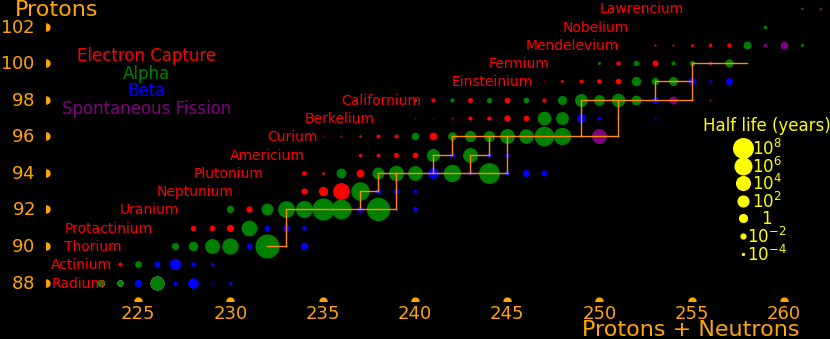 |
|---|
Many exotic isotopes are actinides, the elements surrounding uranium. The orange lines show which isotopes can be made with neutron transmutation.
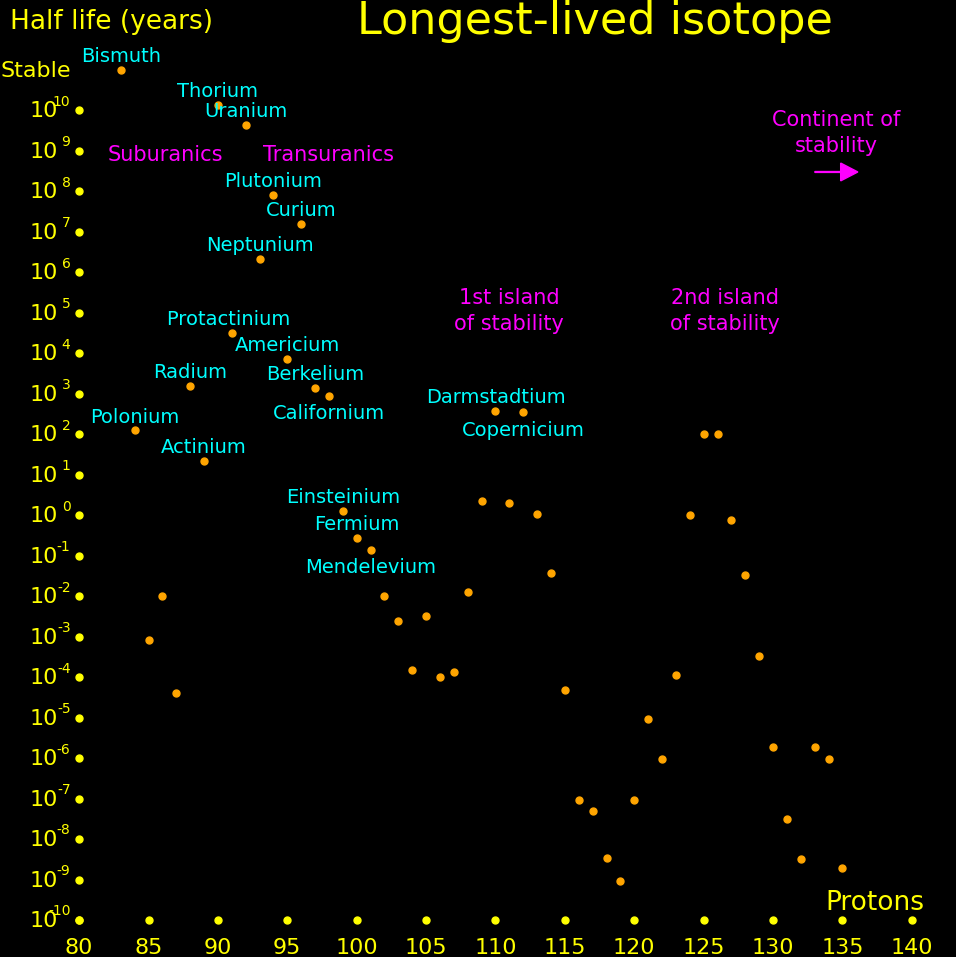 |
|---|
There is a hypothetical "island of stability" around atomic number 112 where nuclei may be long-term stable.
Experiments can only measure the longest-lived isotope up to a proton number of 105, and beyond that we plot theory. Theoretical half lives are uncertain by an order of magnitude.
It's possible that for large nucleon number, larger than around 300, that the nucleus transitions to a lower-energy state, called "Up down quark matter", or "udQM". The existence of udQM is unresolved. Theory is uncertain, and it hasn't been experimentally produced. The largest nucleus that's been produced is oganesson-294, with 118 protons and 294 nucleons. It shows no sign of udQM, so if udQM exists, it's beyond oganesson.
If udQM nuclei exist, they could potentially be long-term stable. They don't fission because it would take the nucleus to a higher-energy state. They decay by alpha until they're too light to be udQM, at which point they fission.
If udQM nuclei exist, then there may be exist long-lived elements from Z=140 to way beyond. These are "continental elements".
The largest nucleus that standard nuclei can make has Z=140. Nuclei larger than this fission with a short half life. The only way that nuclei with Z>140 can exist is if udQM exists.
 |
|---|
If continental elements exist, we can guess their properties by extrapolating from homolog elements. Homologs are elements in the same column of the periodic table.
Continental Homolog Extrapolated properties element element 118 Radon Noble gas 119 Caesium Good for atom traps 121-153 Lanthanides Exotic properties for solid state physics 154 Hafnium High melting point. High hardness 155 Tantalum High melting point. High hardness. STaC melt 4600 Kelvin 156 Tungsten High melting point. High hardness. SW melt 4800 Kelvin 157 Rhenium 158 Osmium Density ~ 40 g/cm3 159 Iridium 160 Platinum Catalyst at high-temperature 161 Gold 162 Mercury
Science fiction authors often invoke antimatter, but they rarely give a recipe for making it. A recipe that respects the laws of physics.
Making antimatter takes big energy. Making an antiproton takes the energy of 10 million proton rest energies.
Making antihelium is even harder. Only a star can do it. A star can fuse up to antibismuth. Continuing to antiuranium takes a supernova.
Antiprotons and antihelium are useless as a power source because they can't be confined in bulk. You need antimetal. Antimetal can also be made into antimachinens and antispaceships.
Recipe:
Make a star of antiprotons. The more massive, the shorter the star's lifetime. The star makes antielements up to antibismuth. At the end of the star's life it goes supernova and ejects material into space.
The more massive the star, the shorter the time to supernova. A supernova needs a star with at least 10 solar masses, and a 10 solar mass star has a lifetime of 10 million years. Making a 10 solar mass star of antiprotons takes the energy of 100 billion solar masses of stars. This can only happen at a galactic central region. A galactic supermassive central black hole is a good place for an antimatter factory.
The ejected material can be confined by a compact object such as a white dwarf, neutron star, or black hole. The material settles into an accretion disk and makes planets, and planets focus antimetal to the cores. Bust up planets into asteroids and collect antimetal asteroids, which can be herded electromagnetically. Use antimetal to herd antirock asteroids. The more massive the compact object, the better, because it gives more room for antiplanets.
Once you have antimetal, you can make antimachines by etching. Antimachines are powered electromagnetically by ordinary machines. Antimachines can make better antimachines and they'll reach a point where they're self-powered.
For stellar fusion, the first step is to fuse protons to He3:
P + P → D + e- + .42 MeV Takes billions of years P + D → He3 + 5.493 MeV Takes 1 second
"P" is a proton, "N" is a neutron, "D" is a deuteron, and "T" is triton.
The first reaction is slow because it needs the weak force. This is why you need a star to fuse antiprotons.
A star with a temperature less than 18 MKelvin makes He4 by:
He3 + He3 → He4 + 2 P + 12.859 MeV Takes 400 seconds
If the temperature is between 18 and 25 MKelvin, He4 is made by:
He3 + He4 → Be7 + 1.59 MeV Be7 + e → Li7 + .861 MeV Half life of 53 days P + Li7 → 2 He4 + 17.35 MeV
If the temperature is more than 25 MKelvin, He4 is made by:
He3 + He4 → Be7 + 1.59 MeV Be7 + P → B8 B8 → Be8 + e+ Half life of 1 second Be8 → 2 He4 Half life of 10-16 seconds
For each kind of object, the table gives the nearest example, and also superlative examples.
Distance Mass Radius Luminosity
light year Sun=1 Sun=1 Sun=1
Star Proxima Centauri 4.24 .123 .141 .0017 Nearest
Star Alpha Centauri A 4.36 1.10 1.23 1.52 Nearest sun-sized star
Star Sirius A 8.7 2.063 1.71 25.4 Nearest blue star
Star Regulus 77 3.8 4.35 316
Star Dschubba 136 13 6.7 38000
Star Naos 1080 56 20 813000
Star Eta Carinae 7500 100 240 4600000 Among the most luminous stars
Red giant Arcturus 37 1.1 26 170 Nearest
Red giant Betelgeuse 700 18 764 126000
White dwarf Sirius B 8.7 1.02 .0084 .056 Nearest
Neutron star RX-J1856 400 .9 Nearest
Pulsar J0108 424 Nearest
Pulsar Vela pulsar 959 89 Hertz
Pulsar PSR J1614-2230 1200 1.91 317 Hertz
Pulsar Crab pulsar 6500 .9 30 Hertz. Brightest gamma source. Gammas up to 10 TeV. 1.6 mllion Kelvin
Pulsar PSR J1748-2446ad 18000 716 Hertz. Highest spin rate
Magnetar AXP 1E 1048.1-5937 9000 Nearest
Magnetar SGR1806-20 42000 Strongest magnetic field at 1011 Tesla
Supernova SN1250 700 Nearest
Star-forming cloud Corona Nebula 430 Nearest
Star-forming cloud Orion Nebula 1344
Black hole Gaia BH1 1560 9.6 Nearest
Black hole Cygnus X-1 7300 30
Black hole Milky Way center 25600 4200000 .019 Nearest supermassive black hole
Black hole Andromeda 2300000 200000000 .85
Black hole Sombrero galaxy 31100000 1000000000
Black hole Virgo A 53500000 6500000000 Virgo Cluster
Black hole NGC1600 149000000 17000000000 Not in a cluster of galaxies
Black hole NGC6166 490000000 28000000000 Abell 2199
Black hole Holmberg 15A 700000000 40000000000 Abell 85
Black hole 4C+37.11 750000000 15000000000 2 holes separated by 24 light years. Total mass given
Black hole MS0735.6 2600000000 51000000000
Black hole Phoenix A 8610000000 1070000000000 424000 Most massive. 3e39 Watts
Active galaxy Centaurus A 12000000 55000000
Active galaxy Messier 81 11700000 70000000
Quasar Markarian231 581000000 4000000 Nearest
Quasar 3C 273 2440000000 886000000 4e12
Quasar Ton 618 10800000000 50000000000 e14 4e40 Watts
Quasar MSS J215728 12500000000 34000000000 7e14 Most luminous. 2.6⋅1041 Watts
Galaxy Milky Way 0 1200000000000
Galaxy Andromeda 2300000 1500000000000 Nearest galaxy that's the size of the Milky Way
Galaxy Virgo central 53000000 6000000000000 Biggest galaxy in the nearest cluster of galaxies
 |
|---|
Some authors educate in science and some don't. Some stick to the known laws of physics and some don't.
If you invent new laws of physics, try to make them consistent. Also make them elegant, where a small number of new rules yields rich structure. For example, the rules of the game of go are simple and they yield rich structure.
Authors that educate: Tom Clancy, Neil Stephenson.
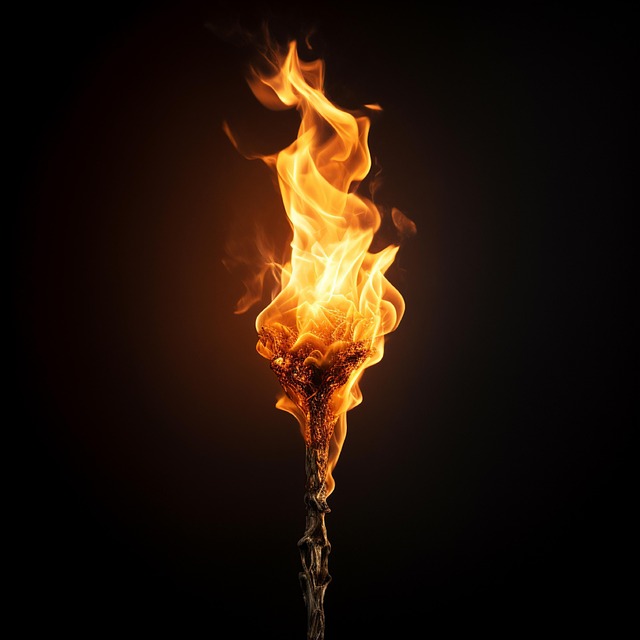 |
|---|
If an advanced civilization decides to broadcast knowledge to the universe, it's hard to stop. It can beam radio waves or it can pulse a star with a Dyson swarm of occulters. A pulsing blue giant can transmit across galaxies.
 |
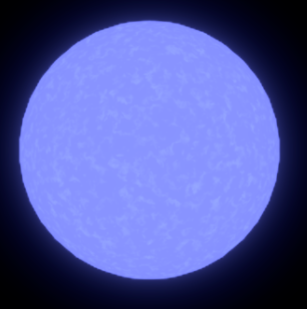 |
|
|---|---|---|
Sizes are to scale and colors are as your eye perceives.
Suppose a blue giant star is surrounded by a Dyson swarm of occulters that can pulse the star. An aluminum telescope mirror can reflect photons with energy as high as 8 eV, so we assume photons with this energy. Assume that 1 bit of information is 100 eV of such photons.
A blue giant is 1010 meters in diameter, and the pulse time should be on the order of the light travel time across the diameter.
Suppose a telescope has an aperture of 1 meter2 and that it collects 1 bit of information per pulse. The distance to the blue giant is 1 billion light years. A megatelescope can detect pulsing blue giants across the universe.
No intelligent pulsing stars have been discovered.
Star diameter = = e10 meter = 10 solar diameters Light speed = = 3e8 meter/second Pulse time = = 30 second Sun power = = 4e26 Watt Blue giant power = = e33 Watt = 2.5e6 solar luminosities Energy in one pulse = = 3e34 Joule Energy of 1 bit of info = = 100 eV ~ e-17 Joule Bits in 1 pulse = B = 3e51 bit Max distance to receiver = R = e25 meter = 1 billion light years Bits/pulse/meter2 = b = (B/4πR2) = 1
An accreting object has a maximum luminosity, the "Eddington luminosity".
If the sun accretes at the Eddington luminosity, it would have 32000 solar luminosities.
If the Milky Way central black hole accretes at the Eddington luminosity, the power is 6e37 Watts, easily seen across the observable universe.
Solar mass = m = 2e30 kg Mass of central hole = M = 4e6 m Solar luminosity = 3.83e26 Watt Milky Way luminosity = 5e36 Watt Eddington constant = Q = 1.26e31 Watt Black hole Eddington lum. = Q M/m = 6e37 Watt
Particle physics is starved for data. The Large Hadron Collider discovered all particles it's capable of discovering and now we need a bigger collider. The options are a linear electron collider and a ring proton collider.
 |
 |
|---|---|
An electron collider gives more precise data than a proton collider, and an electron collider can be built incrementally. A proton collider is all or nothing.
A linear electron collider that is longer than 100 km has to follow the Earth's curvature, giving it a maximum energy of 23 TeV. Above this energy, electrons lose energy by synchrotron radiaton. The collider can have a straight section before the collision to get the energy to 30 TeV.
 |
|---|
For particle acceleration, if superconducting radiofrequeny acceleration is used, the force is 30 MeV/meter. For dual-beam acceleration, the force is .1 MeV/meter. An advanced civilization will likely be able to deliver more force, perhaps with a 3-beam system, or with even more beams.
A collider that reaches the inflation scale (1016 GeV) is likely to be colossally long. With a force of 1 GeV/meter, this is 1 light year. A Planck-scale collider (1019 GeV) is even longer.
A collider with superhigh energy can't use electrons, because electrons lose energy by synchrotron radiation. At superhigh energy, the act of focusing the electron beam drains the beam of energy faster than the accelerator can add energy. A collider with superhigh energy has to use muons, which are less susceptible to synchrotron radiation than electrons.
A collider with superhigh energy has a low cross section for collisions, and hence needs colossal luminosity and colossal energy. It would need a Dyson swarm for power.
 |
|---|
Farm productivity increases with technology. It also increases if fertilizer becomes cheaper. Fertilizer cost hinges on energy cost.
Hydroponics gives more produce/area than land farming. Hydroponics hinges primarily on fertilizer cost.
The following numbers are suggestive because they vary widely.
Production Energy/Mass Power Type of energy
kg/meter2/yr MJoule/kg Watt/meter2
Solar cell - - 40 Electricity
Wind turbine - - 15 Electricity
Algae 10 16 5.1 Biomass
Bamboo 2 16 1.0 Biomass
Grass 1 16 .50 Biomass
Typical tree .5 16 .25 Biomass
Sugar cane 8 16 4.1 Food
Wheat .5 14 .22 Food
Milk .6 2.1 .040 Food
Fish .1 9 .028 Food
Goose (grazing) .1 9 .028 Food
Beef (grazing) .05 9 .014 Food
Tomato 8 .8 .20 Food
Tomato, hydroponic 150 .8 3.8 Food
Suppose a human is fed with wheat. The land needed is:
Human power = 120 Watt Wheat power/area = .22 Watt/meter2 Wheat area = 545 meter2 Population density = 1830 people/km2 World farming area = 50 Mkm2 World max population= 92 billion people
Hydroponics can yield far more productivity, by a factor of at least 20. With hydroponics, the world can support more than 1 trillion people. The ultimate limit is energy for fertilizer.
An object can be given water by crashing an icy asteroid into it. The collision also outgasses CO2. Fusion bombs can steer asteroids.
Nitrogen is rare in the solar system. Objects at Neptune's orbit and beyond have frozen nitrogen. Nitrogen is a gas if closer to the sun than Neptune.
Growing 1 kg of biomass requires, in grams:
Nitrogen 15 Potassium 15 Phosphorus 2 Calcium 2 Magnesium 2 Sulfur 2
The moon has all of the above except nitrogen. Mars' atmosphere has nitrogen.
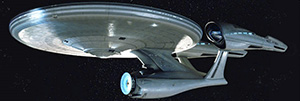 |
|---|
Kirk's interpretation of the Prime Directive is often overly-liberal. You could say that he considers it to be the "Prime Suggestion". If aliens exist then it's reasonable to suppose that they may have something like a Prime Directive, because as yet, no evidence for them has been found.
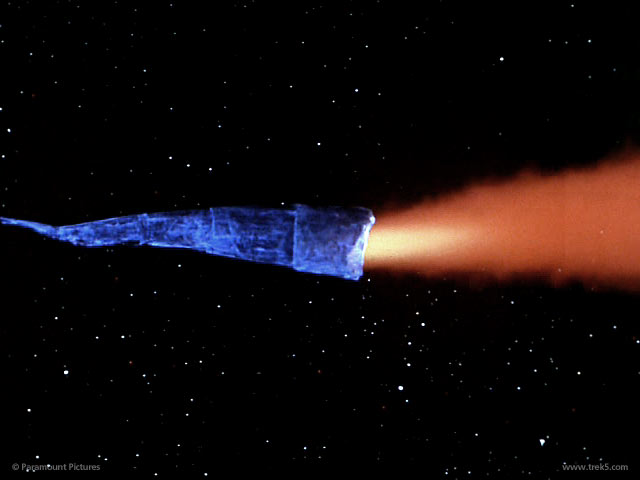 |
|---|
One could imagine aliens creating a "doomsday machine" with orders to replicate itself and travel to every star in the galaxy, and upon arriving, exterminate all life present. If this had happened then we would not be here now. The non-existence of a doomsday machine is one of the few solid assertions that we can make about aliens.
That being said, it may be that there is a doomsday machine waiting to exterminate Earth once we reach a specified technological level. k
 |
|---|
 |
|---|
The future of rocket launch is air launch, giving the rocket a speed boost from the aircraft. Launching at high altitude also reduces air drag. Launch cost is presently $2000/kg and air launch will reduce this. Article.
The moon has metal asteroid craters, which are primarily iron, nickel, and cobalt, and these can be used for space megastructures. They also have platinum-group elements. Article.
 |
|---|
In the future, interplanetary travel will be dominated by fission thermal hydrogen rockets, which have a faster exhaust speed than chemical rockets. In a thermal hydrogen rocket, a nuclear reactor or a solar mirror heats hydrogen exhaust. Article.
 |
|---|
Ion drives use electricity to accelerate ions, with electricity coming from nuclear power. Article.
 |
|
|---|---|
The best place for telescopes is the Lagrange point L2. A manned base should be built here so that colossal telescopes can be assembled on site. Lunar ice supports the station. Article.
 |
|
|---|---|
Metallic asteroids contain trillions of dollars of platinum group metals. They can be mined and moved with hydrogen bombs or space mirrors. Article.
For tension, what usually matters is tensile strength divided by density. Materials with a high value include:
Young's Yield Tensile Tensile Strength/ Tough/ Density Poisson
modulus stress strengh strain density density
GPa Gpa GPa MNewton/kg kJ/kg g/cm^3
Graphene 1050 160 .152 160 12190 1.0
Nanotube 1000 63 .063 48 1480 1.34 Carbon nanotube
Colossal tube 1000 7 .116 Carbon nanotube with large radius
Zylon 270 5.8 .010 3.7 1.56 .5
Kevlar 155 3.76 .023 2.6 57 1.44 .5
Vectran UM 103 3.0 .029 1.4 .5
Vectran HT 75 3.2 .043 1.4 .5
Vectran NT 52 1.1 .021 1.4 .5
Diamond 1220 1.6 2.8 .0023 .80 .92 3.5
Sapphire 345 .4 1.9 .0055 .48 1.315 3.98
Carbon fiber 181 1.6 .0088 .91 4.04 1.75
Beryllium carbide 303 .517 1.9 .12
Rubber, butyl .007 .020 2.86 .92
Balsa 3.7 .020 .12
Pine, white 9 .063 .37
Bamboo 20 .15 .85
Ironwood 21 .181 .181 .0086 .65 1.1
Beryllium 287 .345 .448 .0016 .189 1.85
Magnesium + Li 45 .14 1.43
Magnesium + Y2O3 45 .31 1.76
Magnesium alloy 45 .100 .232 .0052 .344 1.74
Aluminum + Be 70 .41 2.27
Aluminum alloy 70 .414 .483 .0069 .595 2.8
Titanium 120 .225 .37 .0031 .054 4.51
Steel + Co, Ni 220 2.07 .0094 8.6
Moly + W, Hf 1.8 14.3
Aluminum amorphous 70 1.97 2.67 LiMgAlScTi
Titanium amorphous 120 1.20 4.6 Titanium + AlVCrMo
Chromium amorphous 2.26 6.5 AlCrFeCoNiTi
Molybden amorphous 1.22 12.3 VNbMoTaW
Molybdenum + W, Hf 1.8 14.3
Suppose we make a pressurized balloon out of kevlar. There is zero artificial gravity. There is no limit to the balloon size. A 10 ton balloon has a radius of 14 meters.
Balloon thickness = z
Balloon skin stress = t =5*108 Pascal (Kevlar)
Balloon radius = r = 14 meters
Skin density = ρ = 1440 kg/meter3 (Kevlar)
Air pressure = P = z t / r = 105 Pascal (Equation from elasticity)
Balloon mass = M = 4 π ρ r2 z = 10 ton
= 4 π ρ r3 P / t
We assume that the kevlar is under a stress of 5*108 Pascals. The yield stress is 3.6*109 Pascals.
For flotation, what matters is mass/cost, where "mass" is the mass floated. The commodity price for old cargo ships is 1 kg/$ and a kevlar balloon is around 100 kg/$.
Water density = d = 1000 kg/meter3 Kevlar density = ρ = 1000 kg/meter3 Balloon mass = M = 4 π ρ r3 P / t Mass foated = m = (4π/3) d r3 Float mass / Balloon mass = m/M = ⅓ (d/ρ) t / P = 1160 Kevlar cost/$ = C = 30 $/kg Float mass / Cost = Q = (m/M) / C = 39 kg/$
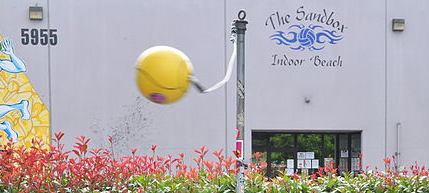 |
|---|
If artificial gravity is generated by spinning a spaceship, the spin period has to be at least 30 seconds for the inhabitants to not get dizzy. If we assume a spin period of 30 seconds and a gravity of 1 g, the spin radius is 228 meters.
Acceleration = A = V2 / R = 10 meters/second2 Spin period = T = 2 π R / V = 30 seconds Velocity = V = 2 π R / T = 48 meters/second Spin radius = R = T2 A / (2π)2 = 228 meters
Suppose a spaceship consists of a tether connnecting two masses, and that the entire system rotates. The largest radius that can be achieved by present materials is 33 km. One could imagine a large cylindrical ship with a radius of 33 km and arbitrary length.
You want the tether mass to be less than the mass it's supporting. The larger the radius, the more massive the tether needs to be to support a given mass. At a radius of 32 km, the tether mass is equal to the mass it supports.
For the calculation, we use Zylon, the material with the best tensile strength to density ratio.
Tether accel. at end = A = 10 meter/second2 Total spaceship mass = M Mass at each end = M/2 We assume that the tether mass is negligible Tether tension force = F = M A / 2 Tether radius = r Tether density = ρ =1560 kg/m3 Zylon tensile strength = 5.8 GPa Tether tensile stress = t = .5 GPa Tether cross-section = S = F / t Tether mass = m = 2 r S ρ = r ρ M A / t Mass ratio = Q = m/M = r ρ A / t = 1 Maximum radius = R = t / (ρ A) = 32 km
Suppose a pressurized cylinder is held together by spokes and that it's not spinning. The spokes have a small footprint on the cylinder. They're hardly noticeable.
There is no limit to the cylinder radius.
Air pressure = P = 105 Pascal Tether stress = t =5*108 Pascal Tether footprint fraction = f = P/t =.0002
The tether footprint is a fraction .0002 of the cylinder surface.
For a curved rope under an acceleration that's orthogonal to the rope,
Mass per length = k Curvature radius = r Acceleration = A Tension force = F = 2 r A k
Suppose a cylinder is spun to make artificial gravity. The curved part of cylinder is under an acceleration that's orthogonal to the surface.
Density = ρ = 1440 kg/meter3 (Kevlar) Cylinder radius = r Acceleration = A = 10 meter/second2 Tensile stress = t = 2 r ρ A = 5*108 Pascal
We assume a safety margin of 8, which is the ratio of the tensile strength to the tensile stress. The table gives the maximum cylinder radius for kevlar and graphene.
Tensile Tensile Density Radius
strength stress
GPa GPa gram/cm3 km
Kevlar 3.6 .5 1.44 17
Zylon 5.8 1.56
Graphene 160 20. 1.0 1000
For carbon fiber, the maximum building height is on the order of 2860 meters. We assume a column of solid carbon fiber under a compressive stress of .05 GPascal.
Carbon fiber compress strength = = .4 GPascal Carbon fiber density = ρ = 1750 kg/meter3 Building height = H = 2860 meters Gravity = A = 10 meter/second2 Stress at column bottom = s = ρ H A = .05 GPascal
The table lists devices that could be part of a tricorder. Light items can be bundled in the tricorder and heavy items can be add-ons.
Power/mass Minimum mass
Watt/kg kg
Thermometer - <.005
Barometer - <.005
Hygrometer - <.005
Accelerometer & gyroscope - <.005
Mic - <.005
Bluetooth - <.005
Wifi - <.005
Light 200 <.005
Speaker, treble 50 <.005
Speaker, ultrasound 50 <.005
Laser 50 <.005
Flash & strobe - <.005 10 MJoules/kg
Periscope - <.005
Camera, Visible - .01
Camera, Infrared - .01
Camera, Ultraviolet - .01
Haptic sensor - .01
Sensor, blood pulse - .01
Flare - .01 10 MJoules/kg
Antenna, audio dish - .01
Joystick & haptic sensor - .01
Filters for IR, visible, UV - .01
Weight scale - .01
Electronic multimeter - .015
GPS - .015
Antenna, radio & audio dish - .02
Radio transceiver 40 .02
Cell phone, no screen 40 .02
Laser, scanning 20 .02
Drone, flying 500 .025
Microscope 20x - .03
Spectrometer. IR, visible, UV .03
Cell phone screen 40 .05
Geiger counter - .05
Magnetometer - .06
Electrometer - .06
EMF, radiofrequency - .06
Speaker, vibrating 60 .1
Radar .1
Projector 50 .1
Keyboard - .15
Satellite phone - .15
Telescope, 7x, 25 mm - .15
X-ray calorimeter - .15 Resolution = 10%
Speaker, bass 20 1
X-ray spectrometer - 1.5 Resolution = .02%
Power sources:
Power/mass Energy/mass
Watt/kg MJoule/kg
Battery, high energy/mass 500 .8 LiNiCoAlO2
Battery, high power/mass 2000 .2 Li4Ti5O12
Capacitor 100000 .01
Generator, gasoline 100 18
Generator, photoelectric 60 -
Generator, thermoelectric 20 5 30% efficiency
Generator, radioisotope 20 200000
Laser weapons are easily reflected by an aluminum shield. Aluminum is the metal that reflects furthest into the UV, reflecting wavelengths as low as 225 nm. Only excimer lasers have a wavelength lower than this. Other lasers have to be frequency multiplied to go beyond this wavelength.
The Earth's atmosphere stops everything below 300 nm, so firing lasers from Earth to space doesn't work.
Lasers:
Excimer Ar2 126 Excimer Kr2 146 Excimer F2 157 Excimer Xe2 172
Aluminum is the metal that reflects furthest into the UV, reflecting wavelengths as low as 225 nm. Only excimer lasers have a wavelength lower than this. Other lasers have to be frequency multiplied to go beyond this wavelength.
The Earth's atmosphere stops everything below 300 nm.
Lasers:
Ar2 126 Kr2 146 F2 157 Xe2 172 Nd YAG x4 266 LED UV 405 Ruby 694 Nd YAG 1064 CO2 10600 Methanol 572000
Hot tungsten can radiate as a blackbody at up to 8 MWatts/meter2.
Steffan-Boltzman = S = 5.67e-8 Watt/Kelvin4/meter2 Tungsten melt = 3695 Kelvin Tungsten temperature = T = 3500 Kelvin Emitted flux = G = S T4 = 8.5 MWatt/meter2
An excimer laser has a range of order 1000 km.
Laser wavelength = w = 126 nm Argon excimer Target width = W = .1 meter Range = R ~ W/w = 800 km
The following charts are stopping lengths for high-energy particles. As the particle stops, it makes a shower of secondary particles that travels further than the primary particle.
 |
|---|
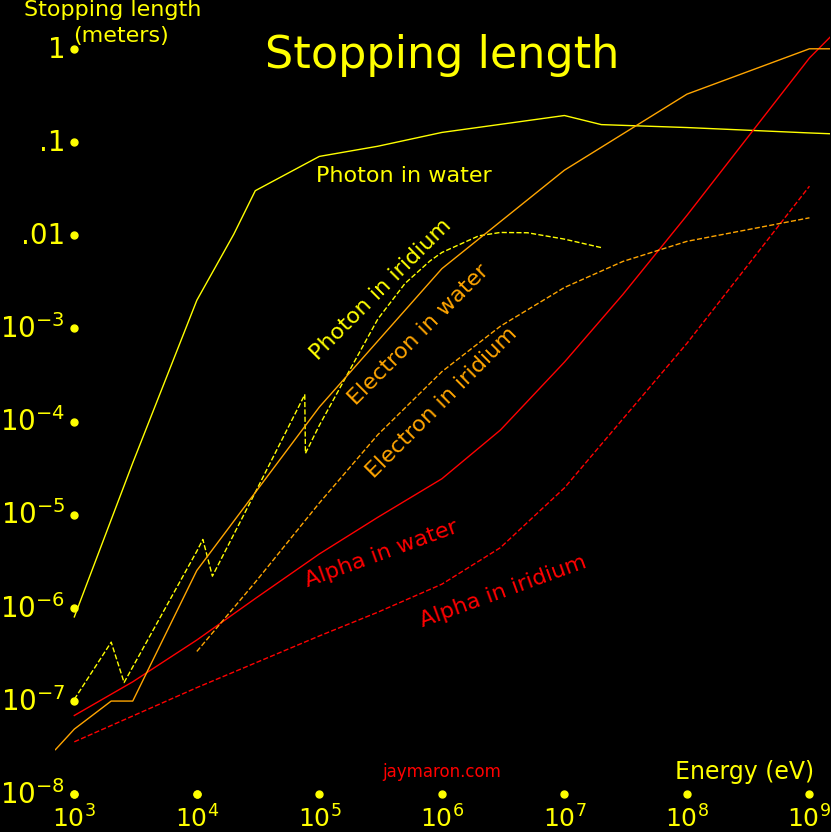 |
|---|
Dust can be charged and accelerated electrostatically. It can vaporize material off a target. Charged dust can have a surface electric field of up to 109 Volt/meter.
 |
|---|